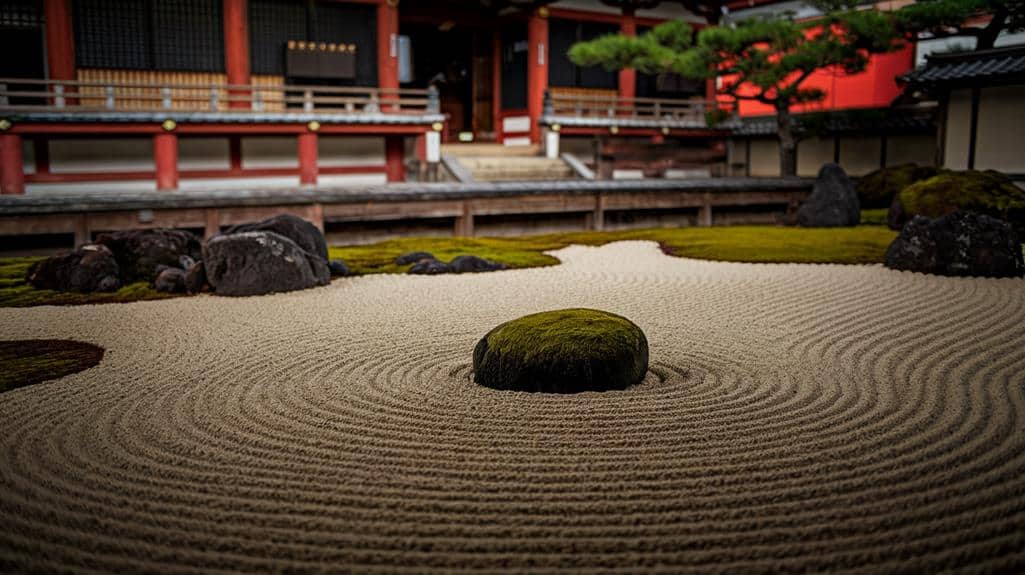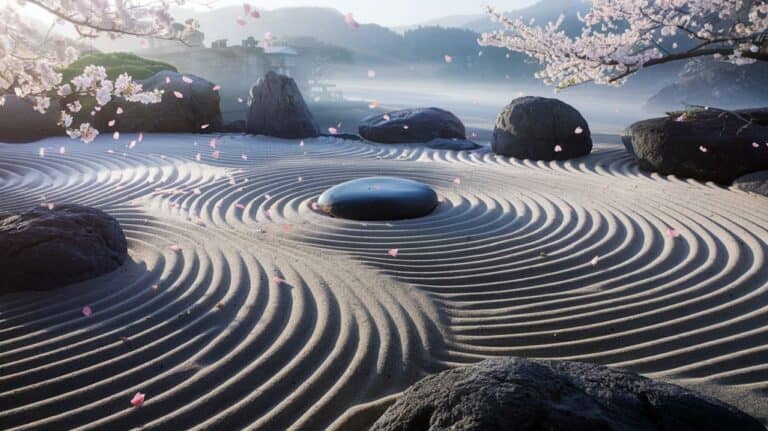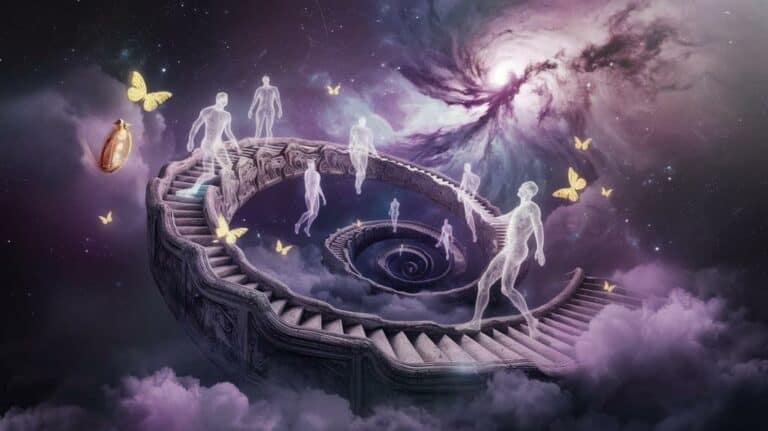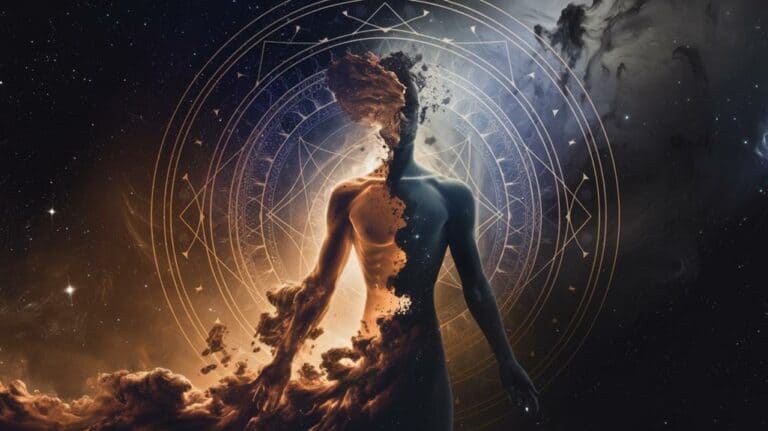7 Zen Koans That Will Blow Your Mind
You’ve likely encountered moments when conventional wisdom falls short, leaving you searching for deeper truths. Zen koans offer exactly this type of perspective-shifting experience, presenting paradoxical riddles that can’t be solved through logical thinking alone. These seven ancient teachings don’t just challenge your mind—they transform how you perceive reality itself. From questioning Buddha’s true nature to contemplating the sound of one hand, each koan serves as a gateway to profound insights that lie beyond ordinary understanding. If you’re ready to embrace the discomfort of not knowing, these mind-bending puzzles will lead you toward unexpected revelations.
What Is Buddha’s True Face?

Buddha’s most enigmatic riddle asks: “What was your original face before your parents were born?” This deceptively simple koan challenges students to look beyond physical appearance and contemplate their true nature before existence itself.
Within this profound question lies an invitation to explore consciousness beyond the confines of time, ancestry, and physical form. As you contemplate your true face, you’re called to strip away layers of social conditioning, inherited traits, and learned behaviors.
You’ll find yourself diving deeper than genetics, deeper than family lineage, into the vast ocean of pure awareness that existed before your current identity took shape. This meditation isn’t about finding a literal answer but about experiencing the boundless nature of your essential being.
Your true face isn’t found in mirrors or photographs – it’s the timeless awareness that witnesses all experience. It’s the consciousness that remains unchanged whether you’re sleeping or awake, young or old.
When you earnestly investigate this koan, you’re not seeking an intellectual solution but rather touching the edge of ultimate reality, where subject and object dissolve into pristine awareness.
The Sound of One Hand
Among the most famous Zen koans, “What is the sound of one hand clapping?” stands out for its apparent impossibility. You might initially dismiss it as nonsensical or conclude that silence must be the answer, but you’d be missing the koan’s transformative potential. This riddle isn’t meant to be solved through logical reasoning – it’s designed to short-circuit your conventional thinking patterns.
When you sit with this koan, you’ll find yourself confronting the limitations of dualistic thought. You’ve been conditioned to think of clapping as requiring two hands, just as you’ve been taught to see the world in pairs: good and bad, right and wrong, self and other.
But what lies beyond these artificial divisions? As you contemplate the sound of one hand, you’re invited to transcend your ordinary mental frameworks and experience reality directly, without the filters of conceptual thinking. The koan becomes a gateway to understanding that truth can’t be captured in words or logic – it must be experienced directly.
Through this seemingly impossible question, you’re led to a place where conventional wisdom falls away, revealing the boundless nature of reality.
The Moon in the Water
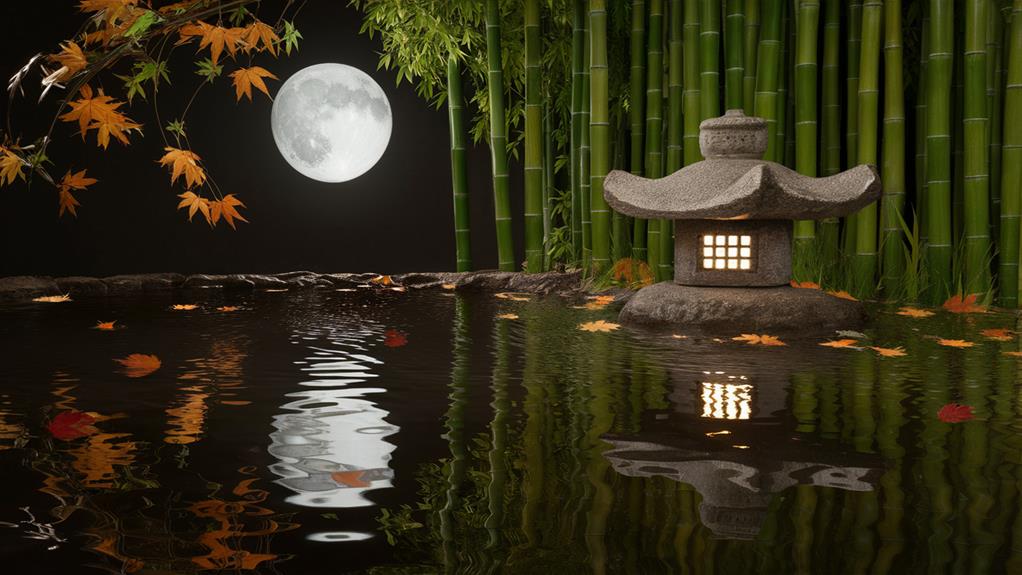
The moonlight koan asks you to ponder a deceptively simple question: “When you see the moon reflected in water, where’s the real moon?”
Like ripples disturbing a still pond, this koan disrupts your normal way of thinking about reality and perception.
You’ll find yourself caught between the physical moon in the sky and its perfect reflection below, questioning which holds more truth. The reflection isn’t just an illusion – it’s a manifestation of the moon’s essence in another form.
You’re being invited to transcend the duality of “real” versus “reflected” and embrace a deeper understanding of interconnectedness.
Consider how your mind, like the water’s surface, reflects the world around you.
You’ve created countless mental images and concepts, but are they separate from their source?
When you point to the moon’s reflection, you’re also pointing to the actual moon.
The boundary between subject and object dissolves, revealing that what you perceive as separate entities might be expressions of the same underlying reality.
In this space between perception and truth, you’ll discover that the answer lies beyond the limitations of ordinary thinking.
The Price of Rice
Occasionally, Zen masters would test their students with seemingly mundane questions about rice prices in the marketplace. You might wonder why enlightened teachers would concern themselves with such ordinary matters, yet within these simple inquiries lies a profound teaching about the nature of reality and your relationship to it.
When you’re asked about the price of rice, you’re not merely being tested on your knowledge of market values. The question pierces through your conceptual thinking, forcing you to confront the immediate reality of your experience.
You’ll find that your mind wants to calculate, compare, and contextualize, but the master isn’t interested in your intellectual gymnastics. They’re inviting you to see beyond the surface of things, to recognize that the price of rice contains the entire universe.
In this practice, you’re challenged to respond from a place of direct experience rather than accumulated knowledge. The rice’s price becomes a gateway to understanding the interconnected nature of all things – from the farmer’s labor to the rain that fell months ago, from the merchant’s livelihood to your own sustenance.
A Cup of Tea
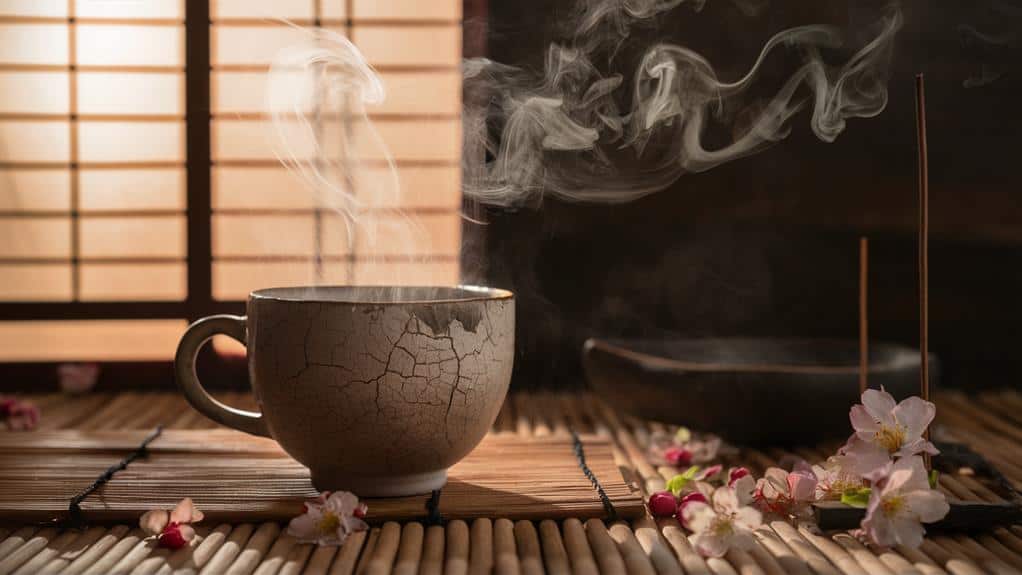
Many Zen teachings come down to the simple act of drinking tea.
You’ll find this truth exemplified in the famous koan about Nan-in, a Japanese master during the Meiji era, who received a university professor seeking enlightenment. As the visitor sat before him, Nan-in served tea with deliberate precision, continuing to pour even as the cup overflowed.
When you contemplate this story, you’ll understand that the professor’s cup, like his mind, was already full of preconceptions and academic knowledge, leaving no room for new wisdom.
You can’t receive fresh insights when you’re cluttered with existing beliefs and judgments. The overflowing teacup serves as a mirror, reflecting your own tendency to approach life with a mind so full of thoughts that wisdom can find no entrance.
You must empty your cup first – release your attachments to what you think you know.
Only then can you truly begin to learn. It’s in this space of emptiness that you’ll discover the profound simplicity of Zen, where the ordinary act of drinking tea becomes an extraordinary path to enlightenment.
The Present Moment
Like the mindful pouring of tea, living in the present moment forms the core of Zen practice. You’ll discover that your mind constantly wanders between regrets of the past and anxieties about the future, rarely settling in the now. Yet it’s in this precise moment – not yesterday, not tomorrow – where life actually unfolds.
Consider how you’re reading these words right now. Your breath flows in and out, your body maintains its position, and countless processes occur without your conscious direction. This awareness of your immediate experience, free from judgment or analysis, opens the gateway to profound understanding.
You’ll notice that when you’re fully present, your mental chatter subsides, and you experience reality directly, unfiltered through the lens of concept or memory.
The present moment isn’t just another spiritual concept – it’s the only point where you can actually live, act, and transform. When you release your grip on what was and what might be, you’ll find yourself in direct contact with life’s inherent wisdom, discovering that this moment contains everything you need for awakening.
Empty Your Cup First

The famous Zen story of the overflowing teacup teaches a crucial lesson: you can’t receive new wisdom when your mind is already full of preconceptions. Like that cup brimming with tea, your thoughts and beliefs may leave no space for fresh perspectives to enter, limiting your potential for growth and enlightenment.
When you approach life’s teachings with a mind cluttered by assumptions, judgments, and rigid beliefs, you’re fundamentally asking to fill an already full vessel. Just as the tea spills wastefully onto the table, wisdom can’t find its place in a consciousness that’s already overflowing. You must first create space by letting go of what you think you know.
To truly learn, you’ll need to cultivate emptiness – not as a void, but as a state of receptivity. Consider how your accumulated knowledge might actually be blocking your path to deeper understanding.
When you empty your cup – releasing your attachments to established patterns of thinking – you create the possibility for transformation. In this space of openness, you’ll discover that true wisdom often begins with the humble acknowledgment of how much you don’t know.



